Going, Going, Gone part 7 − Men at Work [Column_Tracksides]
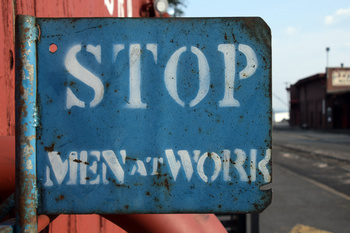 : Durango, CO. Sep. 7, 2017
: Durango, CO. Sep. 7, 2017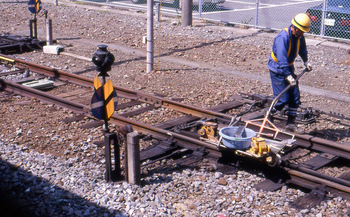 : Yokosuka, Japan. Mar. 28, 1997
: Yokosuka, Japan. Mar. 28, 1997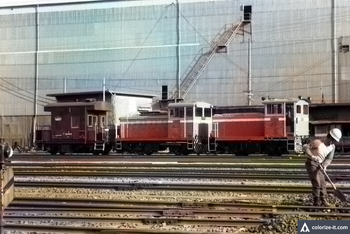 : Naniwa, Osaka, Japan. 1980s
: Naniwa, Osaka, Japan. 1980sThe blog “Boxcar Red Collection” marked the 10th anniversary in February last year, before even I noticed it. Also is that many things are going or gone in this decade before I hardly noticed it. So, let me look back at what we’re missing or missed.
While jointed tracks are replaced with welded rails, the way of and the tools used in maintaining tracks also made progress. Hand tools like beaters and man-powered equipment like hand cars used to maintain tracks are replaced by huge maintenance of way machines. The dancers and the gangs aren’t needed in the field anymore.
Introducing a new way of railroading like Precision Scheduled Railroading (PSR) might have reduced not only the number of trains but also the switching moves and the workforce engaged in them.
Introducing new technologies like Distributed Power Units (DPU) might have reduced the number of trainmen. Introducing the new way of train controlling like Positive Train Control (PTC) might have unmanned the towers.
Thus, the workforce employed by railroads is drastically shrinking. For example, the number of Union Pacific’s employees has dropped one-third, from 47457 employees in 2015 to 30960 in 2020. CSX dropped half of its workforce in this decade: 31344 in 2011 to 15700 in 2020.
Some of the icons of railroading like hand signals with lanterns are also going with the workforce in the field. The opportunities of using hand signals are decreased amid the expanse of the use of radios and remote controllers. A Union Pacific blue-globe lantern was sold for $46,200 at auction in 2021[1].
Another icon, the traditional working wears like bib overalls, bandannas, and engineer’s caps are also going. Safety jackets, earplugs, and hard caps are the norm today. Wearing masks are the latest "normal".
[1] Smith, Greg, (2021) ‘Packrat’ Cregut’s Railroadiana Collection Tracks Records At Soulis, Mar. 30, 2021, Antiques and the Arts Weekly The Bee Publishing;
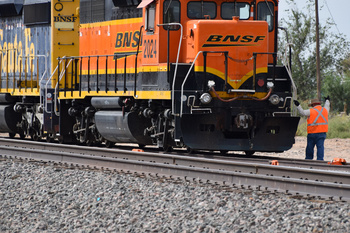 : Vinton, TX. Sep. 10, 2015
: Vinton, TX. Sep. 10, 2015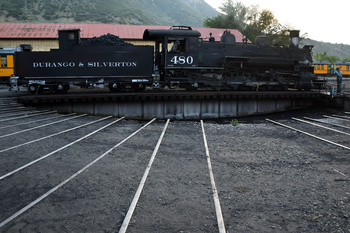 : Durango, CO. Sep. 7, 2017
: Durango, CO. Sep. 7, 2017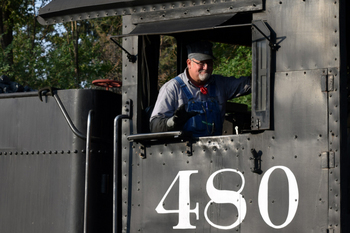 : Durango, CO. Sep. 7, 2017
: Durango, CO. Sep. 7, 2017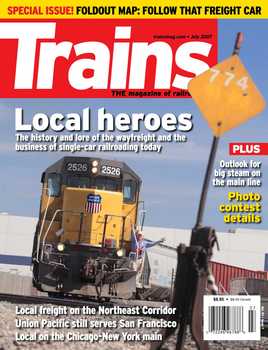 : Jul. 2007 Trains
: Jul. 2007 Trains気が付いたら、このブログを始めてから10年以上経っている。記事を改めて見直すと、長いようで短い間にも色々と変化があることに気付く。そんな回顧を「Going, Going, Gone」というタイトルでまとめてみた。
最初の画像にあるのはブルー・フラッグといって、点検・作業中の車両に取り付ける標識である。これが掲げてある間は該当車両を動かしてはならないことになっている。作業中である鉄道員の安全のためである。今回の主題は、その鉄道員である。
この10年の間に、北米における鉄道会社はその従業員の数を劇的に減らしている。ユニオン・パシフィック鉄道ではこの5年で三分の二以下になった。CSXなど半減させている。Precision Scheduled Railroading (PSR)やPositive Train Control (PTC)の導入による効率化・省力化の他、Distributed Power Units (DPU)や無線、リモコンといった新しいデバイスの導入が人員削減に寄与していると思われる。
洋の東西を問わず、現場で働く鉄道員の姿を見ることは以前より少なくなった。先の記事で記したように、線路のつくりが変われば保線の方法も変わる。かつて保線作業はマン・パワーの塊であったが、今は巨大な機械の連なりに置き換わっている。ビーターや手押しトロッコといったレイアウトのシーナリーには必須のアイテムも、現実世界では消えつつある。
北米の鉄道におけるアイコンのひとつといっていいだろう、手信号に用いていたランタンは最早アンティークである。Ebayなどに大量に出品されている。手信号そのものも無線に取って代わられたようだ。
模型に載せる機関士のフィギュアが必ずといっていいほど身につけているつなぎにキャップという装いも、保存鉄道以外では見なくなった。ヘルメットに安全服、乗務員はそれに耳栓、という出で立ちが今日の鉄道員における標準・規定である。あとはマスク、だろうか。
2021-03-12 09:00
コメント(0)




コメント 0